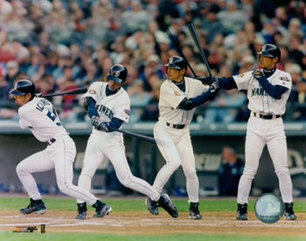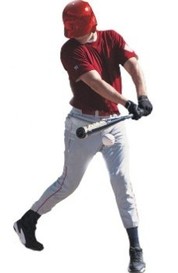|
This could be the single most important article you ever read as a pitcher. I hope to clear up some myths about when to throw what pitch, where, and in what count. This is the Core Savvy Baseball™ pitch sequence breakdown. I would like to start with a short story that has changed my thoughts on pitching in general. It was during my Sophomore year of college and I was in a bases loaded jam with 1 out. My pitching coach came out to the mound to talk it over. It was the other team's clean up hitter so I was expecting some kind of careful approach. To my surprise he was busy talking to the infielders on what they would be doing in the next half inning on offense! I was puzzled and was looking for some guidance on how to get out of this mess. He then turned to me, almost as an after thought, and said "Put a fastball inside just above the belt, get your come-backer, and go home to 1st for the double play" and then walked away. I looked to my catcher and said "Well I guess thats what I'm doing". So there I went, first pitch inside just above the belt. It was the perfect spot, and what do you know…a jam-shot that rolled right back to me. The play had gone just as my coach had drawn it up. It was almost like my coach was reading from some hidden rule book. How did he know what to throw and the exact result I would get? As I would later learn, it was based on a combination of pitch sequencing and swing types, it was not magic. In the MLB, scouting reports go flying around the league form team to team on almost every player. For pitchers, they are looking at tendencies of their pitch sequence. For hitter's, their scouting reports are based on their swing types. This struggle between the two will last for the rest of time in the baseball world. The hitters want to know whats coming, and the pitchers want to keep the hitter from knowing whats coming. The pitcher can take the advantage by being able to identify different swing types. Some of these swings include:
The term hip slide may be familiar to you because it has been covered in previous posts as a hitting flaw. Basically what it is, is a continuous forward movement with the hips toward the plate. In a good swing, the hips will stop at a certain point and the batter will begin to rotate. The extra movement forward with hip slide creates wasted movement and a longer swing. When you come across a swing like this, you can routinely pound the inside part of the plate with fastballs. The reason for this is because the exaggerated forward movement will not allow the hitter to fully rotate his hips to rotate on the inside pitch. Some other good pitches to throw to hip-slide hitters are offspeed pitches low and off the plate and high fastballs. If you can throw all these pitches will good location to these hitters, expect a lot of slowly hit balls back to you and pop-ups to the catcher. Next we have guys who swing with their hands, or in other words lead with their hands. This hitting flaw has also been covered in previous post and is when the hands lead the swing, instead of the hips and core. This would be a polar opposite of what the hip slide guys do. The main problem is that they disconnect with their lower half and harness little power. A good way to approach this type of hitter is to get ahead with a fastball away. Because they squander much of their potential power, this pitch will be hard for them to cause any damage on. Once ahead, I recommend an assortment of off-speed pitches. Since they lead with their hands, it is very difficult for them to adjust to any kind of off speed. These are probably the easier hitters to strike out and expect ground balls anywhere in the infield.
Now that you know how to pitch to these specific swing types, try to look out for them and implement these strategies. One thing to keep in mind is that in baseball, nothing works all the time. Be sure to not become predictable over the course of a game because any hitter can hit a pitch that he's looking for. Besides that, have fun pitching with great success and missing barrels! We've been able to help out a lot of people so far, so keep the questions coming : [email protected]
0 Comments
Your comment will be posted after it is approved.
Leave a Reply. |
Core Savvy Authors : |


 RSS Feed
RSS Feed
